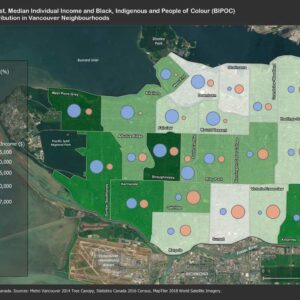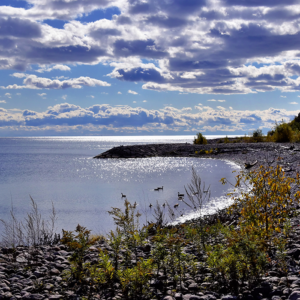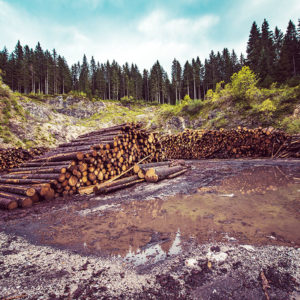New Nature Canada Report Addresses Inequality in Cities’ Tree Cover
Unceded Algonquin Territory – Ottawa, ON, September 21, 2022
Nature Canada released a report today titled Canada’s Urban Forests: Bringing the Canopy to All. In the report, researchers have mapped the urban tree cover in five Canadian cities (Vancouver, Abbotsford, Calgary, Toronto, and Montreal) and conducted interviews with local subject matter experts adding to growing evidence that there are major inequities in Canada’s urban tree planning that disadvantage racialized and lower-income communities. The report focuses on what we can do about that, providing recommendations for governments and advocacy groups on how to improve access to nearby, high-quality, forests for all.
“Urban forests are vital to our communities,” says Gauri Sreenivasan, Policy and Campaigns Director at Nature Canada. “But our report shows not all of Canada’s urban population is benefitting equitably. To serve both nature and justice, everyone in Canada should be able to access high-quality nearby nature and all levels of government should work with communities to make this possible; it’s a key part of addressing environmental racism.”
The report’s map analysis in Vancouver, Abbotsford, Calgary, Toronto, and Montreal, reinforces findings that tree canopy tends to be much lower in low-income and racialized neighbourhoods. Interviews with municipal staff, urban foresters and other experts helped uncover the reasons for this: lack of funding, absence of a planning process that values trees, and weak public engagement with those communities that need trees.
Based on this research, the report proposes that equitable access to urban forests should be thought of in terms of three variables—proximity to urban trees and forests, urban forest quality, and participation in the governance of urban forests.
“All levels of government have a role to play in achieving tree equity as well as local groups like tree-planters, equity advocates, and anyone who believes in equal access to nature,” says Hannah Dean, Nature Canada’s Organizing Director. “Through such programs as the 2 Billion Tree Program (2BT) and the Natural Infrastructure Fund the federal government can prioritize tree planting in urban and near-urban landscapes while also increasing climate resilience in racialized and marginalized communities. But cities are caretakers of their own green spaces, and much of the real progress will happen there.”
For municipalities across Canada, the report offers the following recommendations:
- Decolonize the urban forest and prioritize equity. Cities need to give voice and power to those in underserved and marginalized neighbourhoods. This is particularly important for Indigenous communities, the original caretakers of the land.
- Build urban forest strategies into the planning process. Trees cannot be an afterthought in laying out cities but must form a core part of municipal land-use policies.
- Develop tree inventories across the city and set neighbourhood targets. Tree inventories give a clear picture of the arboreal “haves” and “have-nots.” They are an essential starting point for setting tree canopy targets by neighbourhood.
- Promote urban biodiversity. Municipalities should plant trees in order to reconnect landscapes, provide habitat for wildlife and reverse biodiversity loss.
- Incentivize tree planting on private land. Since a large part of the urban tree canopy is not found on public land, cities need to encourage private landowners to pitch in.
The report recognizes that these changes require local grassroots advocacy in every city across the country and also offers guidance to nature and community organizations on how to mobilize for change:
- Spread the word by writing op-eds, organizing events, and sharing our report on your social channels.
- Identify the social and climate justice groups, tenant and community associations and tree groups in your city.
- Get to know your city’s Urban Forest Management Plan and the federal 2 Billion Tree program.
- Meet with municipal councillors to talk about tree equity.
- Start a petition to show your municipal council that tree equity is an important issue for the whole community.
- Take pictures of the tree-lush and tree-deficient neighbourhoods to send to your councillor. Post them on social media and tag relevant decision-makers.
- Start a letter-writing campaign to have community members bring the issue forward to their own councillors.
- Sign up to speak at budget, infrastructure, and environment meetings on the importance of trees in all areas of our lives.
- Offer your knowledge and support for any policy changes required.
Taken together, the recommendations in the report offer concrete steps which Canadian activists and decision-makers can take at all levels to help reduce systemic barriers to urban nature and improve our communities to the benefit of all.
Read the Report: Canada’s Urban Forests: Bringing the Canopy to All
Nature Canada is Canada’s voice for nature. For 80 years, Nature Canada has helped protect over 110 million acres of parks and wildlife areas in Canada and countless species. Today, Nature Canada represents a network of over 130,000 members and supporters and more than 1,000 nature organizations.
-30-
For more information contact:
Scott Mullenix
media@naturecanada.ca | 613-462-4024



